Key Takeaways:
- Matted hair can cause significant discomfort and pain for dogs, leading to skin irritation and potential health issues.
- Regular grooming and proper care are essential to prevent matting, especially in breeds with long or curly coats.
- Professional grooming can help manage severe matting and maintain the overall health and comfort of a dog's coat and skin.
Matted hair is not just an aesthetic issue for dogs; it can lead to a host of health problems and discomfort. As a dog owner, it's crucial to understand the implications of matted fur and how to prevent it. This comprehensive guide will delve into the reasons why matted hair can hurt dogs and provide practical advice for maintaining a healthy coat.
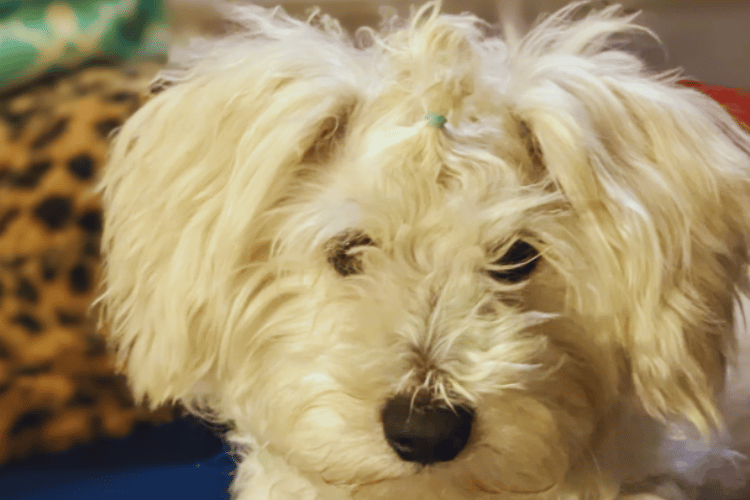
The Painful Truth Behind Matted Fur
When a dog's fur becomes tangled and knotted, it can pull on the skin, causing pain and discomfort. This is especially true for dogs with curly coats or long silky coats, where the hair grows continuously. The tight mats can restrict movement and even mild matting can lead to skin issues. For dogs, whose skin is more sensitive than ours, even a small mat can be a source of constant irritation.
Skin Conditions Caused by Matted Coats
Matted dog hair can trap moisture and debris against the pet's skin, creating a breeding ground for bacteria and parasites. This can result in hot spots, skin infections, and other health concerns. The lack of regular air circulation to the skin can exacerbate these conditions, making it crucial for dog owners to address matting as soon as it's noticed.
The Role of Regular Grooming
Regular grooming appointments are essential for preventing mats in your dog's coat. Brushing not only removes loose fur and fine fur but also ensures proper airflow to the skin. For double coated dogs or those with long coats, daily brushing may be necessary to prevent mats and maintain the health of both the outer coat and the underlying skin.
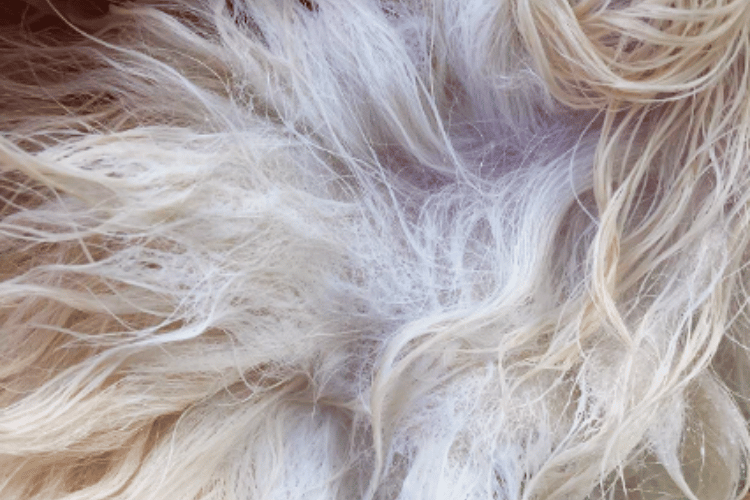
Choosing the Right Brush for Your Dog's Coat
Using the right brush is key to effectively detangling your dog's hair without causing discomfort. Slicker brushes are often recommended for long hair dogs, as they can help remove mats and dead hair from the entire coat. For dogs with fine fur or sensitive skin, a softer brush may be more appropriate to prevent causing any pain.
The Dangers of Severe Matting
Severe matting can be extremely time-consuming and challenging to remove. In some cases, the mats can become so tight that they easily cut loose skin when attempting to remove them. This is why it's crucial to seek the help of an experienced groomer who can safely remove mats without harming your dog's skin.
Psychological Effects of Matting on Dogs
When we talk about a dog's comfort, it's not just physical. Matting can have psychological effects too. Dogs with matted fur may feel anxious or stressed due to the constant discomfort.
The sensation of tight knots pulling on their skin can lead to behavioral changes such as irritability or lethargy. It's important to recognize that our furry friends can experience emotional distress from their physical state, which is why addressing matting promptly is crucial for their overall well-being.
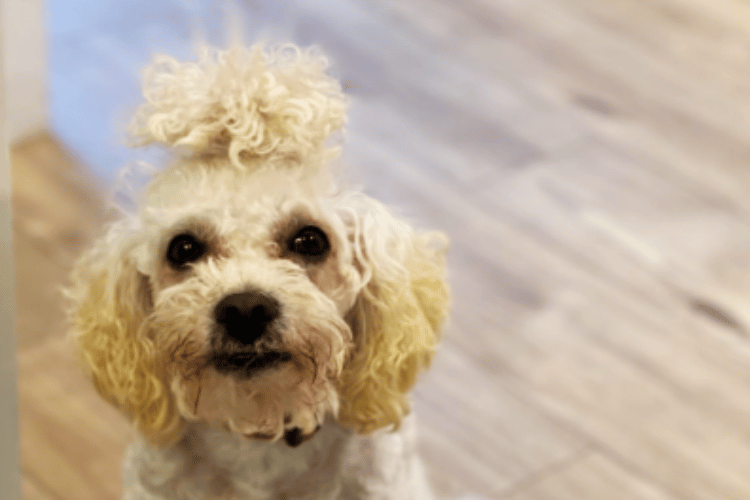
Moreover, dogs are creatures of habit and routine, including their grooming habits. When a dog's coat becomes matted, it can disrupt these routines, leading to confusion and unease. The presence of a matted coat can also hinder a dog's ability to communicate through body language, as mats can mask the natural movement of their fur and skin. This can be particularly troubling in social situations with other dogs, where clear communication is key.
The Connection Between Matting and Dog's Skin Health
Matting isn't just an aesthetic issue; it's a health concern that directly affects a dog's skin. When fur tangles tightly, it pulls on the skin, causing discomfort and potentially leading to skin abrasions or infections. The trapped fur can also harbor dirt, bacteria, and parasites, which further irritate the pet's skin.
This is particularly problematic for double-coated dogs, whose dense undercoat can mat quickly if not regularly maintained. Owners should be vigilant in checking their dog's fur, especially in areas prone to matting, such as behind the ears and the neck area.
For dogs with sensitive skin, matting can make matters worse. The constant tension can lead to hot spots, a painful condition where the dog's skin becomes inflamed and infected. These spots are extremely time-consuming to heal and often require veterinary attention. Regular brushing and detangling are crucial in preventing these skin issues.
If matting does occur, it's important to address it gently to avoid causing further harm to the dog's skin. In severe cases, consulting a local groomer or veterinarian is the best course of action to ensure the dog's comfort and health.
The Hidden Dangers of Matting in Double Coated Dogs
Matting in dogs, particularly those with double coats, can be more than just an aesthetic issue—it can lead to serious health concerns. Double coated dogs, like Huskies and German Shepherds, have a dense undercoat that can trap dead hair and debris, making matting worse if not properly maintained. This entanglement of the dog's fur can pull on the skin and cause pain, leading to a reluctance in movement or even behavioral changes as the dog tries to avoid the discomfort.
Moreover, the dense mats can hide skin infections or parasites that may otherwise be noticed and treated early. The trapped moisture and lack of air circulation create an ideal environment for bacteria and yeast to thrive, which can severely affect the dog's skin health. Owners of double coated dogs need to be particularly vigilant, as de-matting these breeds can be extremely time-consuming and requires a gentle approach to avoid further distress to the pet's skin.
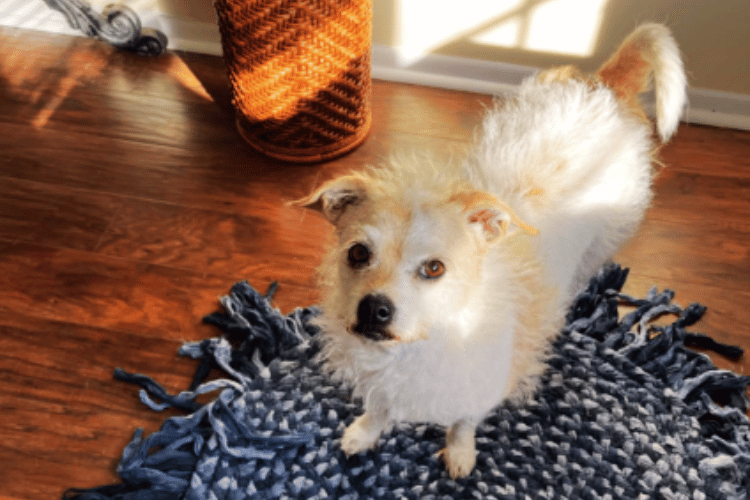
The Importance of Diet in Preventing Matting
When it comes to maintaining a healthy dog's coat, diet plays a pivotal role that is often overlooked. A balanced diet rich in essential fatty acids can significantly improve the condition of a dog's fur, making it less prone to matting.
Omega-3 and Omega-6 fatty acids, found in fish oils and flaxseeds, contribute to a shiny and smooth coat that is easier to manage. Ensuring your dog receives the right nutrients can lead to healthier skin and fur, which in turn, can reduce the likelihood of painful mats forming.
Moreover, a proper diet can support a dog's skin health, which is crucial in preventing matting. Dogs with skin allergies or sensitivities may experience dry and brittle hair, which is more susceptible to tangling.
By identifying and eliminating allergens from a dog's diet, pet owners can alleviate skin irritation and promote a stronger, more resilient coat. This proactive approach to nutrition can save pet owners from the extremely time-consuming task of de-matting and contribute to the overall comfort and well-being of their furry friends.
Matting and the Importance of Hydration for a Dog's Coat
Hydration is not only vital for a dog's overall health but also for maintaining a healthy coat. A well-hydrated dog is more likely to have a supple and elastic skin, which is less prone to the issues that lead to matting.
Encouraging your dog to drink ample water throughout the day can help maintain the natural moisture balance of the pet's skin and fur, reducing the risk of dryness and subsequent matting. Additionally, using hydrating shampoos and conditioners during baths can help retain moisture in the dog's coat, making it more manageable and less likely to tangle.
In the case of double-coated dogs, hydration becomes even more critical. The dense undercoat of a double-coated dog can trap debris and oils, leading to mats if not properly hydrated and groomed.
Regularly providing fresh water and incorporating moisture-rich foods into their diet can help maintain the integrity of a double-coated dog's fur. By keeping the dog's skin and coat hydrated, pet owners can ensure their dog's comfort and reduce the frequency and severity of matting, making grooming sessions less stressful for both the dog and the owner.
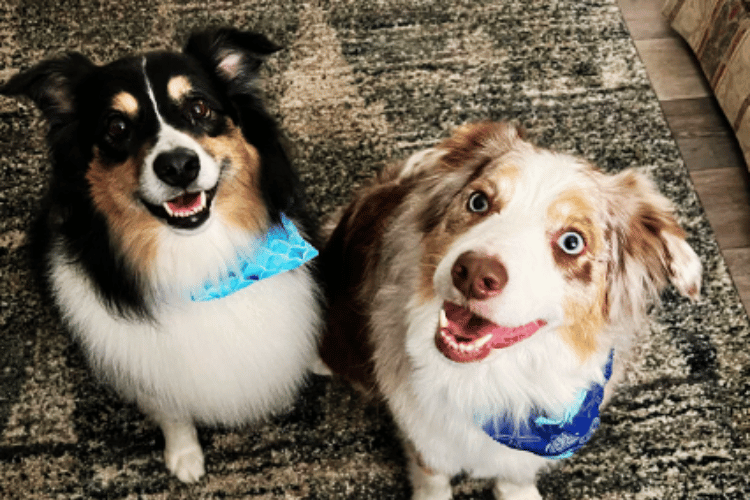
Matting and Mobility: How Tangled Fur Affects a Dog's Movement
When a dog's coat becomes severely matted, especially around the limbs and underbelly, it can significantly hinder their mobility. The mats can tighten to the point where they restrict the natural movement of the dog's body, making everyday activities like walking, running, or even lying down uncomfortable. This restriction can lead to a decrease in the dog's overall activity levels and potentially contribute to muscle atrophy or joint problems over time due to the lack of exercise.
In addition to physical restrictions, the discomfort from matting can also lead to a dog's reluctance to be touched or groomed, which only exacerbates the problem. Regular grooming sessions, therefore, are not just about maintaining the dog's appearance but are crucial for the dog's comfort and well-being. Owners should be mindful that de-matting can be extremely time-consuming and may require the assistance of a professional groomer to ensure the dog's fur is untangled without causing additional stress or pain.
Matting in the Neck Area: Collars and Canine Comfort
The neck area is a hotspot for matting, particularly where a dog's collar sits. Collars can exacerbate matting by causing friction and trapping moisture, leading to more severe tangles and discomfort. It's essential for dog owners to regularly check beneath their pet's collar for signs of matting and to ensure the collar is not too tight.
For double-coated dogs, the thick fur around the neck can quickly become a breeding ground for mats if not properly groomed. A well-fitted collar and routine brushing can significantly reduce the risk of matting in this sensitive area.
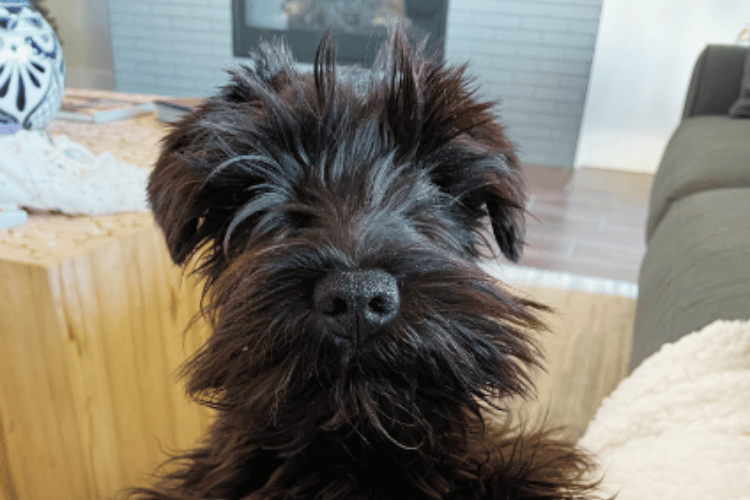
When matting occurs around the dog's collar, it can be especially painful due to the constant movement and pressure in that region. This can affect the dog's comfort and mobility, potentially leading to behavioral changes as the dog tries to alleviate the discomfort.
De-matting this area is delicate work, as the skin is sensitive and the risk of pulling live hair is high. Owners should approach de-matting with care, using the appropriate tools and techniques, or seek assistance from a professional groomer to safely remove the mats without causing distress to their furry friend.
Home Remedies for Minor Matting
For pet owners, discovering a matted coat on their dog can be daunting, especially since professional pet grooming can be extremely time-consuming and sometimes costly. However, for minor matting, there are home remedies that can help. A slicker brush is a great tool for tackling small mats.
Gently brushing the dog's fur daily can prevent matting from getting worse and can help in slowly detangling the knots. It's also beneficial to invest in a good quality detangling spray, which can soften the mats and make the de-matting process less painful for your pet.
In addition to brushing, regular baths with a conditioner designed for dogs can help keep a dog's skin and coat healthy, reducing the likelihood of mats forming. When bathing a double-coated dog, it's essential to thoroughly rinse out all the product to avoid residue that can contribute to matting.
Remember, patience is key when dealing with mats at home. Rushing the process can cause more harm to your dog's skin and fur, so take your time and give your pet plenty of breaks to ensure their comfort.
Professional Grooming: A Solution for Matted Coats
Professional groomers have the tools and expertise to handle matted coats effectively. They can use detangling spray, specialized combs, and their knowledge of coat types to make the entire process as painless as possible for your dog. In severe cases, they may even recommend shaving the coat to a manageable length to start fresh.
The Impact of Matted Hair on Dog's Ears and Collar Area
Areas like behind the ears and around the dog's collar are particularly prone to matting. These fur mats can cause significant discomfort and even lead to skin conditions if not addressed. Regular checks and grooming can help prevent mats from forming in these sensitive areas.
Seasonal Changes and Matting
As dogs transition from their winter coat to their summer coat, they shed dead hair, which can contribute to matting. During these times, increased grooming can help manage the shedding and prevent matting. It's also important to ensure that your dog's coat is completely dry after bathing, as wet or dry hair can become matted more easily.
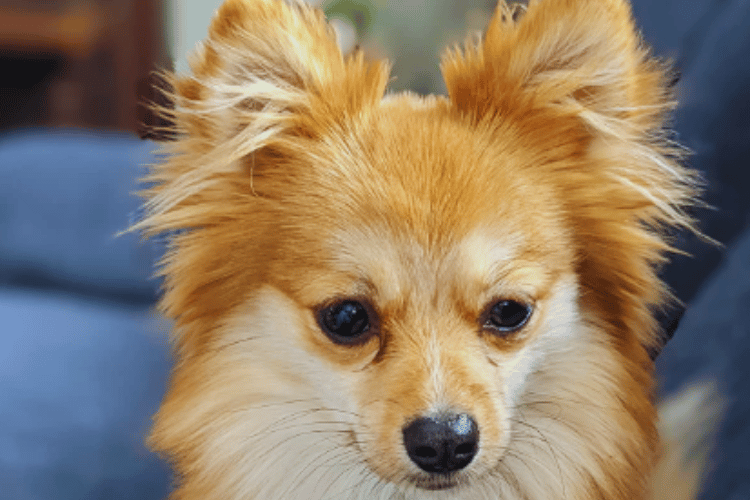
Matting and Other Health Concerns
Matting can be a sign of other health issues in dogs and cats. For example, a dog that is not grooming itself properly may be experiencing pain or discomfort from an unrelated health problem. Regular grooming appointments can help identify these issues early on, allowing for prompt veterinary care.
Preventing Matting in Dogs with Double Coats
Dogs with double coats, such as Cocker Spaniels, require special attention to prevent matting. Both the top layer and the undercoat need to be brushed regularly to remove loose fur and prevent severe matting. This ensures that the entire coat receives proper airflow and remains healthy.
Summary
Matted hair in dogs is more than just an unsightly problem; it can cause significant discomfort, pain, and lead to serious skin conditions. Regular grooming, using the right tools, and professional help when necessary are key to preventing and managing matted fur.
By understanding the risks associated with matting and taking proactive steps to maintain your dog's coat, you can ensure your furry friend's comfort and well-being.
FAQ Section
How often should I groom my dog to prevent matting?
The frequency of grooming depends on your dog's coat type. Dogs with long or curly coats may require daily brushing, while others might need less frequent grooming. It's best to establish a routine that works for your dog's specific needs and stick to it to prevent matting.
Can I remove mats at home, or should I always go to a professional groomer?
Small mats can sometimes be gently worked out at home using the appropriate tools and techniques. However, for severe matting or if you're unsure how to proceed, it's best to consult a professional groomer to avoid accidentally hurting your dog.
Are certain breeds more prone to matting than others?
Yes, breeds with long silky coats, curly coats, or double coats are more prone to matting. These include breeds like Cocker Spaniels, Poodles, and Shih Tzus. Regular grooming and proper care are especially important for these breeds to prevent matting.
Thank you for visiting LegitLists we hope this helps you make a legitimate choice!






